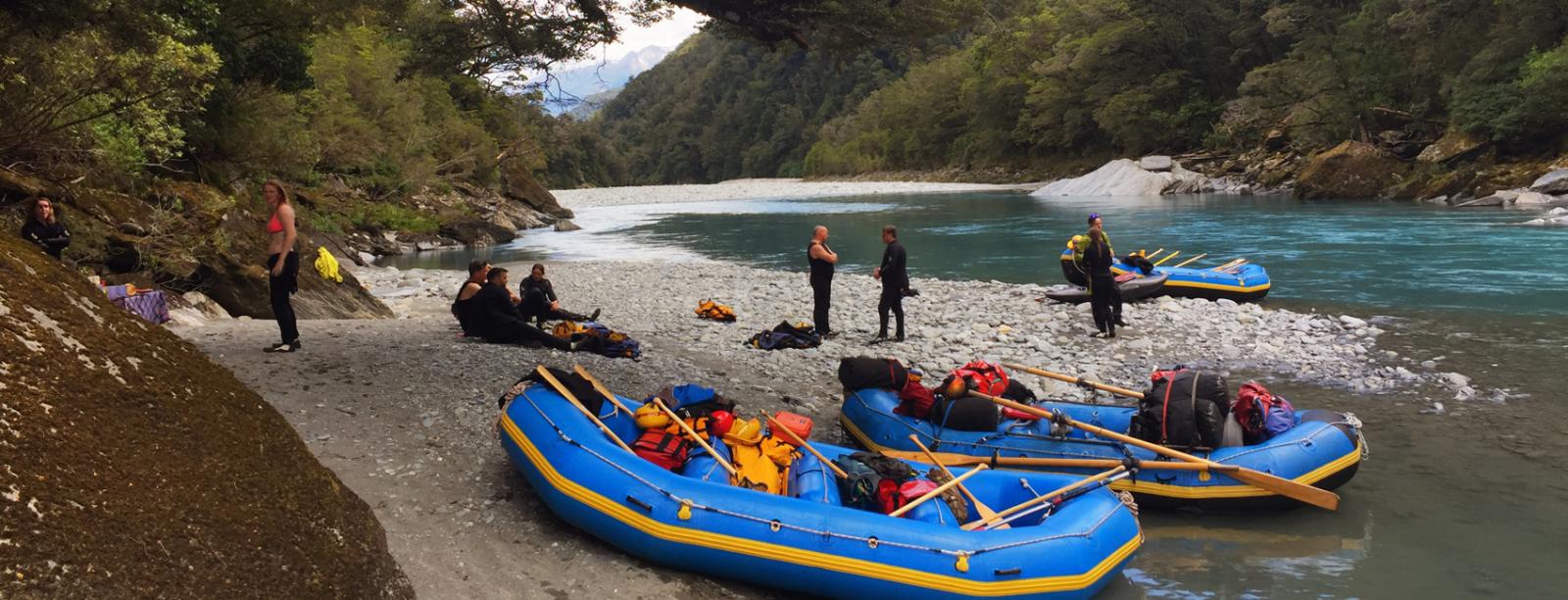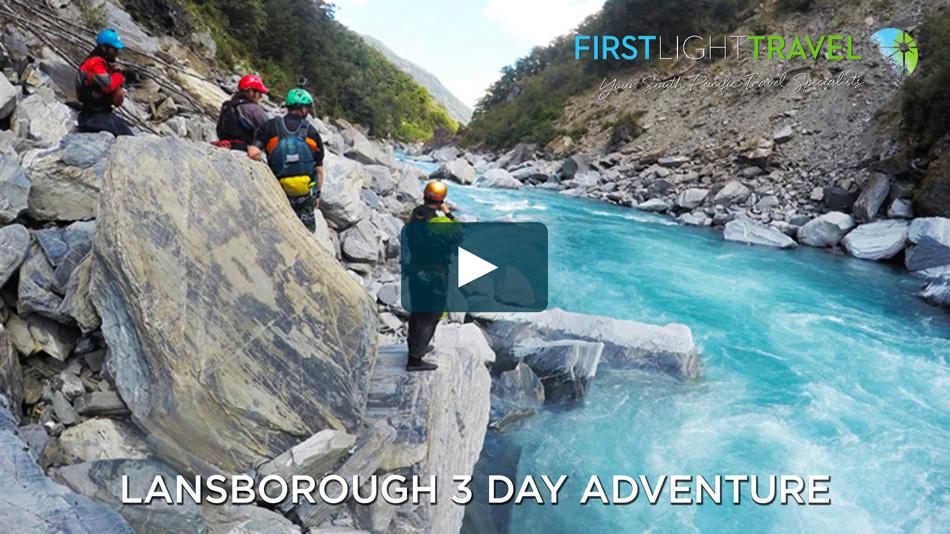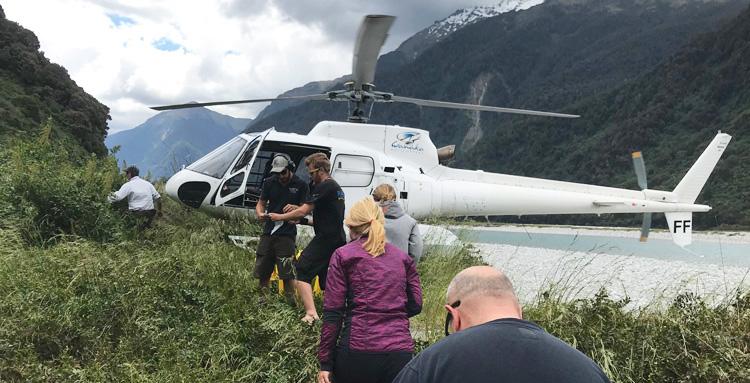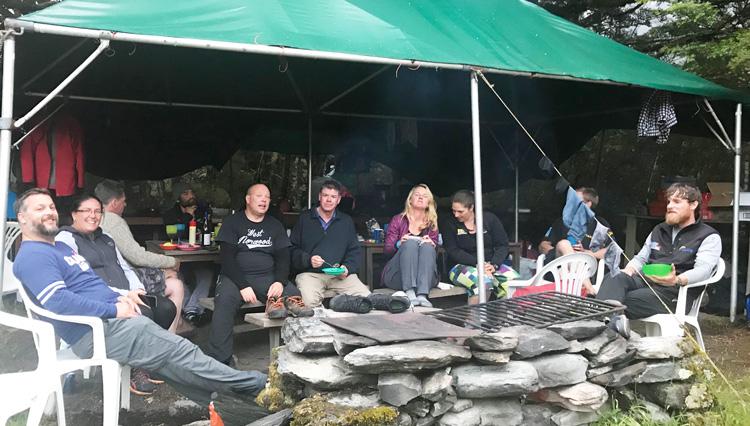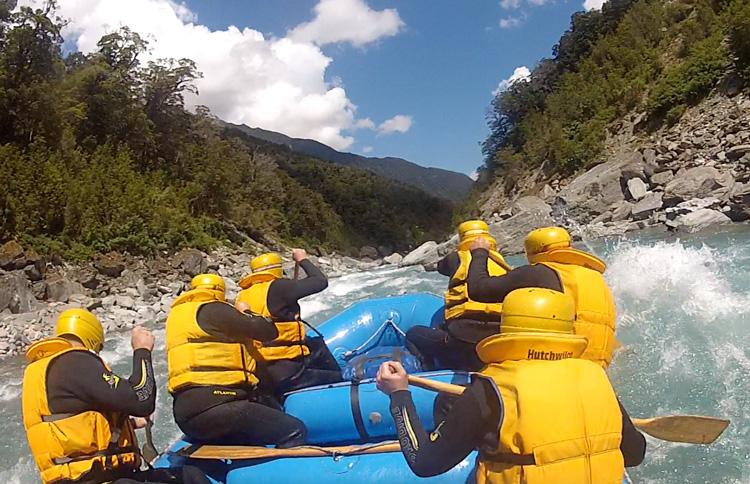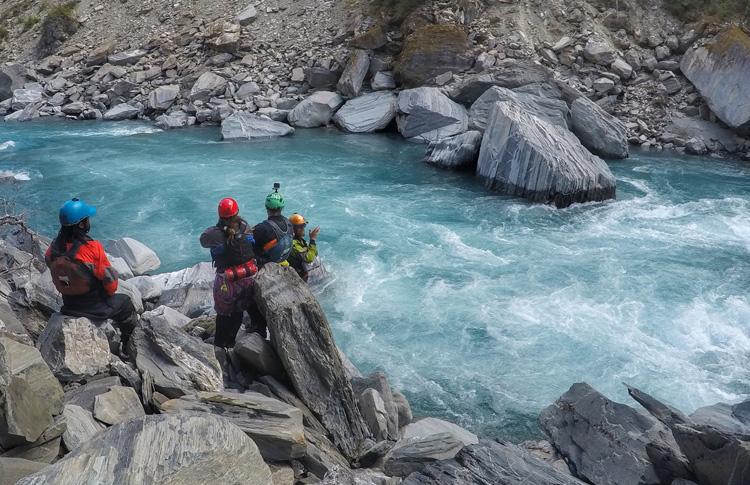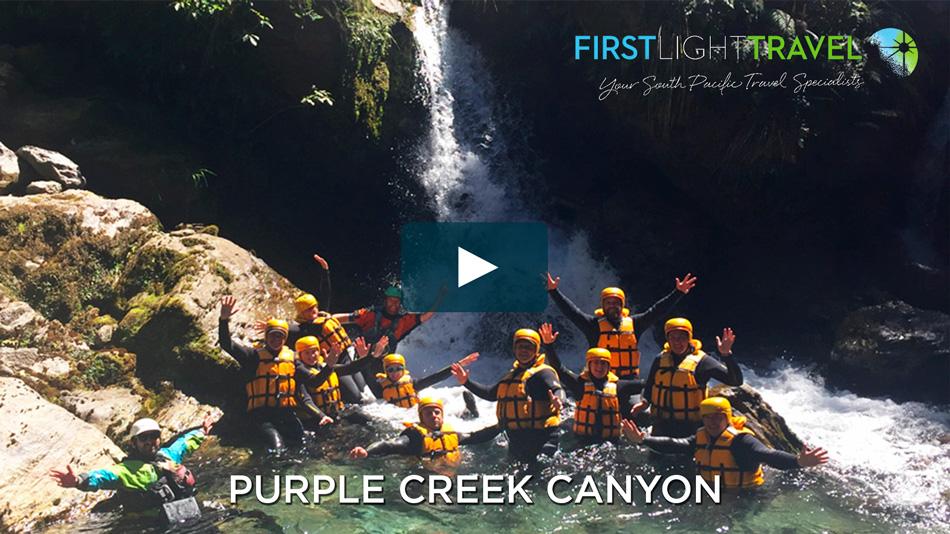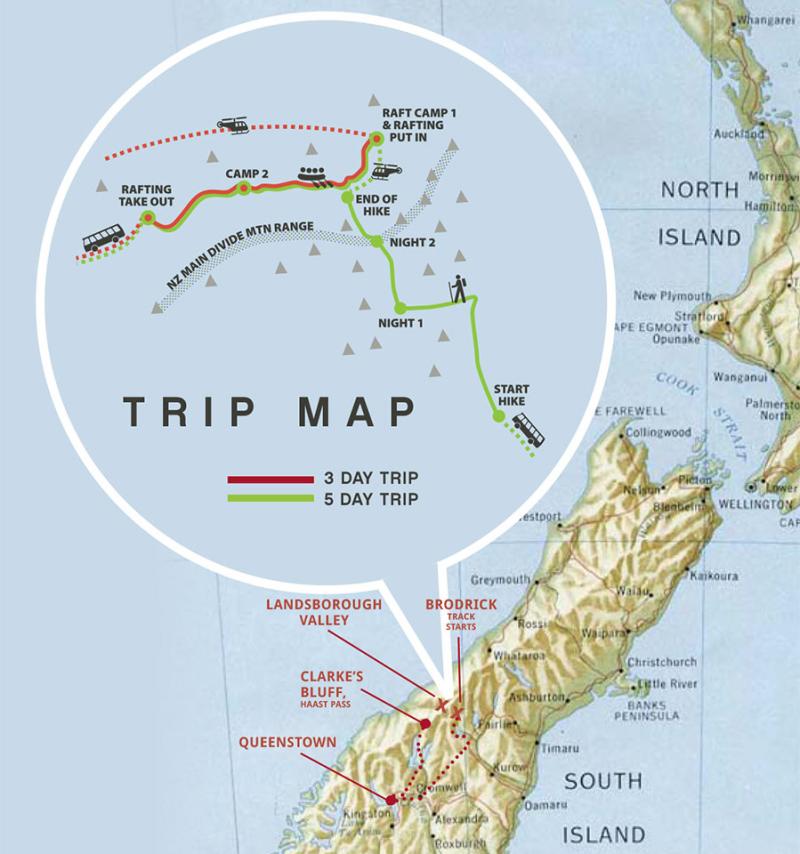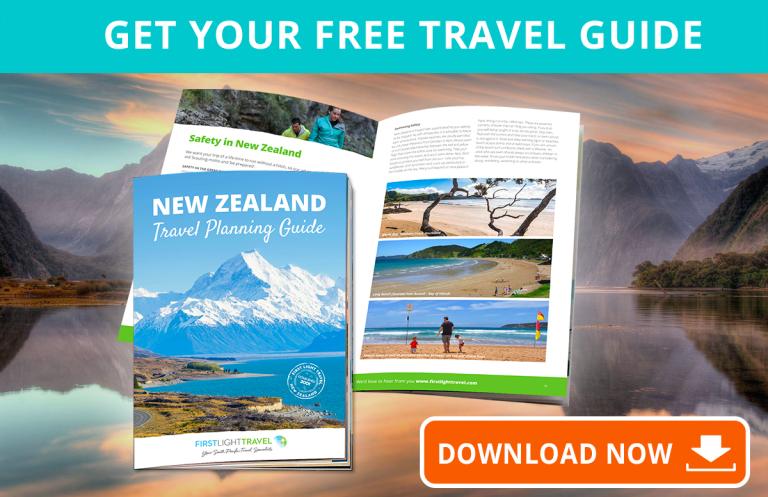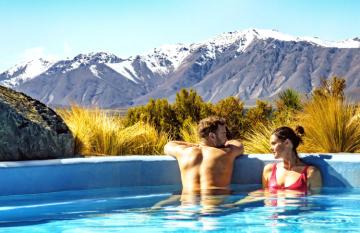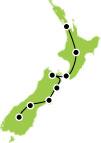
This is a rare beauty! The Landsborough is possibly one of New Zealand's most scenic and isolated wild rivers. For better or worse I am now signed up for a three-day rafting adventure on the Landsborough River as it flows from Mt Cook National Park to the Haast River in South Westland - on the rugged West Coast of the South Island.
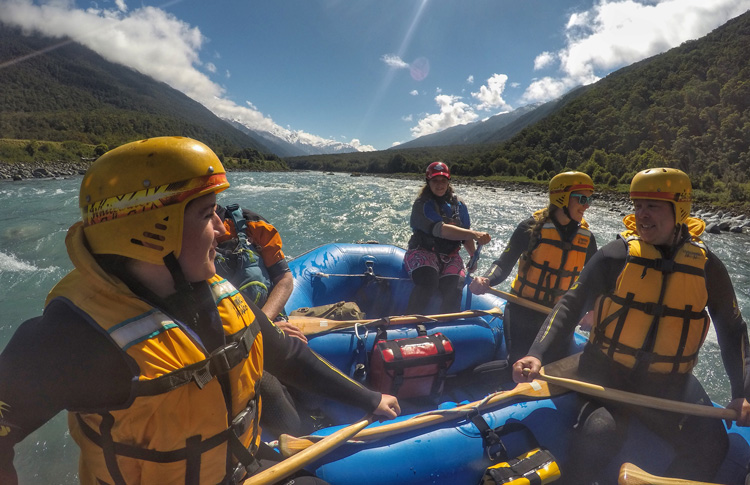
I’m no stranger to white water, in my younger years I was fortunate enough to raft the Kicking Horse in Alberta Canada while visiting the Calgary Stampede. I have also been smashed rafting the mighty Zambezi River (Grade V) from Vic Falls in Zimbabwe in the early 90’s – but this is the first time I have ever been on a multi day rafting trip and certainly nothing this remote.
Where is it and what makes it so special?
The Landsborough is a glacier fed (cold), cobalt blue river that flows 50 km (31 mi) from the Southern Alps through the West Coast and into the wild Tasman Sea. It flows from north to south along the South Island’s Main Divide and links Mount Cook and Westland National Parks with Mt Aspiring National Park, flowing into the Haast River. This river sports some interesting grade III and IV rapids.
Unadulterated Natural Beauty
The Landsborough valley is known for its dense silver beech forest that blankets the gullies and rugged ridges as far as the snow line. At its head are impressive ice cliffs, glaciers and snowfields that cover the numerous peaks that during the thaw feed the the river below. Flanked by mountains rising thousands of meters above the white-water is festooned by giant granite boulders covering the valley – The valley is known for its abundance of Native birdlife.
Take a look at the video of our 3 day experience...
Day One
Up at the crack of dawn on a warm Queenstown morning, we are collected from our hotel and assemble at the rafting base and fitted with safety gear we then packed into the supplied Drybag (my new best friend) – wetsuit, booties, gloves, life jacket, helmet and spray jacket. – Great to not to have to worry about this stuff. There is also a storage facilities available to leave personal belongings until our return 3 days later – easy.
It’s a scenic three-hour drive to Clarke’s Bluff where our helicopter is due to depart. On the way we stop off at Lake Wanaka for a coffee and the tiny settlement of Makarora for lunch. Then its over to the West Coast, crossing through the Southern Alps via the Haast Pass. The scenery changes and now we drive through predominantly native beech forest as we follow the Haast River. The drive is very scenic, we pass the beautiful Haast Gates (a phenomenally steep set of large rapids) and get a look the picture postcard Fantail and Thunder Creek falls.
Just before the Haast Bridge is Clarke’s Bluff, here we load our helicopters overlooked by Mount Macfarlane. This braided, slow flowing section section of the lower Haast River gives a false sense of security, its only further upstream that the river shows it's true nature.
The twenty five minute helicopter flight into the Landsborough Valley is spectacular, revealing the rivers cobalt colour, dense native forests and towering mountains, we finally we see the Alps loom as the helicopter climbs to the head of the Southern Divide before descending to base camp. We have plenty of time to unpack and explore the magnificent surroundings before dinner - a delicious three-course meal. I’m Sold!
Base Camp
I've camped all my life and found that you can tell a lot about an organisation by the way the camp has been set up and these guys have done it pretty well. It needs to be though, we are in the high country, and more importantly on the South Islands West Coast - this is where rain was invented and the pesky Sandfly evolved.
Kitchen & Communal Area
Set on a scenic spot high above the river and well out of waters reach with views to the mountains and down the river valley. A heavy-duty canvas tarpaulin held up by industrial scaffolding marks out the kitchen area giving the space both height and absolute protection from any potential downfall.
A well-equipped kitchen sits at the back with gas hobs, hand washing basin and serving benches. The middle section holds the dining tables and the front is where you have the view, complete with a large stone sided large fire pit surrounded by camp chairs - perfect for drying sodden boots or listening to the odd exaggerated yarn or 2.
Sleeping
A 200m (650 ft) walk is the sleeping area, placed well out of earshot of the dining area, consisting of 7 large 4 man tents (that only sleep 2). The tents have been erected with a third lawyer of protection, a heavy duty canvas tarpaulin suspended above the tent ensuring any rain runs off before actually hitting the tent. Inside are 2 large camp stretchers keeping you well off the ground and sitting on top is a thick inflatable mattress making it as comfortable as can be.
The Loo
After a happy 200 m (650 ft) walk on a well groomed path through native bush is ‘Brand New’ for the season the ‘Long Drop’ or the Waterless Covered Composting Toilet – The view from this Loo is one of the best I have ever seen – up the river and dwarfed by mountains.
Note: At this point I had better point out that the only wild animals found in the valley are native birds and nothing else - No Bears, Snakes or Poisonous Insects – and truth be told on the 2nd night I slept in the bush under the stars, I had had a cold and was snoring like a trooper so I banished myself to keep my ‘roommate’ onside – I awoke as fresh as a daisy with not a scratch to be seen.
3 Course Dinners and Cooked Breakfast – One Can’t Grumble
This is the part I liked best, not only were our rafting guides spot-on when it came to leading our group downriver safely - they were pretty good cooks as well. In the evenings we are treated to a very nice three course meal with a choice of wine & beer and in the mornings a hearty cooked breakfast – fat chance of loosing any weight on this trip! … And better still they did the dishes.
* The 2nd campsite is equipped with a califont hot water shower!
Day Two
I’m used to getting up at the crack of dawn for this type of adventure but I was pleased to learn that we could all just relax and enjoy the environment – it’s an 11 o’clock briefing.
Briefing
The success of any rafting trip is the ability to read the river and to position the raft in such a way that the river carries you down the path of least resistance…or if you want - the most turbulent route - depending on the type of experience you are after. Regardless, successful rafting is achieved by teamwork and listening to the instruction of your guide. – it is not a democracy.
The commands are fairly strait forward. Paddle forward, paddle back, Left side paddle forward, Right side paddle back. Brace! (Get into the middle of the raft) and PADDLE HARDER! - And a combination of the above. It dosn't take long before we are all experts. Failure to listen or to act in a prompt fashion will often mean you end up in the drink!
The positioning of camp 1 allows our team a good 1-½ hours on the water practicing before we meet the big grade 4 rapids.
Good News for those that find the rapids a little overwhelming, the guides are more than happy to deliver you to the bank before the rapid and you can just boulder hop until you meet with the raft at the other end.
Then things get interesting
Class 4 or a Grade 4 Rapids = Whitewater waves, rocks, considerable drops that requiring coordinated sharp maneuvers and above all listening to your guide – intently.
As we face the first grade 4 rapid (called Hellfire) a sharp drop and left turn leaves us facing a monster schist boulder, we align our raft slightly to the right hand side of the monster PADDLE HARDER! Our teams raft smugly flows down the side of the rock, the raft semi submerging and bounces up again in the rivers midsection – easy peasy… PADDLE BACKWARDS HARD NOW!
Time for a swim
An aching sensation gripped my lower jaw was caused by the silly grin splashed across my face – adrenalin is addictive. However from the corner of my eye I spot raft 2 hit the same rock we had skilfully avoided and spewed 2 of their crew into the water. PADDLE BACKWARDS HARD NOW! was being repeated even louder - I understand now we were trying to stop our selves from getting sucked into the squeeze (the 2nd grade 4 rapid rapidly approaching), the idea being to slow the raft to assist our friends out of the water.
Well it nearly worked, unfortunately or fortunately, depending how you look at it, pulling 2 folks into the raft while being caught in a whirlpool made the raft lose its balance and flip - so now everyone had the chance for a high velocity swim.
After the excitement of 6 more rapids we stopped on a very scenic beach for well-deserved lunch. The rest of day two was spent moving from jaw-dropping scenery to more jaw-dropping scenery before reaching camp 2 for the night.
There is a reason you need experienced guides.
The amount of rain that can be dumped onto this part of the world is truly legendary, and if it starts raining heavily the Landsborough floods and becomes a monster. Our guides both men and women were seasoned veterans, seasonally moving around the world rafting epic rivers in places like the Himalayas, Papua New Guinea, Uganda, Canada and the US – and the one thing they all had in common was when it started to rain they all started to twitch – listening and looking for a subtle change in the river.
Every time our raft approached large rapid we would pull to the riverbank and our guides would disembarked to examine the rapid looking for dislodged tree’s or excessive flow or a change of river direction. If it was deemed safe the pilot kayak would venture first followed by our supply raft (manned by two experienced guides) and only then to the loud commands from our skipper would follow.
Guide Qualifications: All of our rafting guides hold New Zealand guiding qualifications. They are First Aid and Swift Water Rescue trained and are registered with the New Zealand Rivers Association.
Unfortunately: One week after our trip and on arrival back to basecamp the guides made the decision to cancel the trip - the river had risen, they turned around and helicoptered everyone out again. No doubt an expensive decision but a decision a private rafting group also on the river that day had wished they had made – unfortunately their trip turned to a misadventure.
Day Three & Purple Creek Canyon
After yet another leisurely start we attack a couple of entertaining grade III rapids, including a hard right turn called Surprise Corner, then the river widens and slows just before we meet the Clark River confluence where we stop for lunch and have an extraordinary side trip to see the beautiful Purple Creek Canyon – too hard to find the words – take a look at my video.
From the Clarke confluence it's about a 1.5 hr off flat paddling through braids to the Haast and where our coach awaits.
Wildlife in the Landsborough Valley
In the Landsborough Valley both ground and aerial predator control (Targeting stoats, rats and possums) have been used by the department of conversation (DOC) so successfully that there has been a significant population increase with many of the bird species. So much so that DOC has successful transferred 60 little Mohua (Yellowhead) to Resolution Island in Dusky Sound and to Arthurs Pass National Park from Landsborough Valley. The only other place I have ever seen the tiny Yellow Head was at the Routeburn Track the walk to the falls on the Genorchy side of the track.
I personally have never seen so many Kākā (New Zealand’s forest parrot) before, which for me was a total thrill as these are awesome birds. The nights were also interesting with the silence broken by many haunting calls of the Morepork (our native owl)
While rafting we saw no less than 3 pairs of Whio (Blue Duck) a species notable for the living on fast-flowing rivers, a trait which is shared by only three of the world's water fowl species. Sadly, surveys indicate that the total population in New Zealand may be less than 1100 pairs, so a real treat to see.
Summary
I loved this trip for many reasons; the genuinely friendly crew backed by a professional company took away any niggles I had had and Yes the rafting over burley rapids was awesome fun knowing that at the end of the day there was a good feed and a comfortable camp - But I think having the opportunity to be completely isolated in such a beautiful place is what did it for me and I plan to take my daughters when they are old enough. (Age Limit: Minimum 15 years with a Weight Limit: Minimum 40kg or 88lb)
I give this experience 5 out of 5 stars
MAP OF THE JOURNEY
Since 2001 we’ve been helping visitors plan their dream New Zealand holiday. We aim to make visiting our beautiful land effortless. Let our expert holiday planners put together an itinerary for you, no obligation FREE of charge, or get some friendly advice on what small group tour would suit - Just follow the link and answer a few brief questions.
Recent Posts
Blog Categories
Blog archives
- February 2025 (3)
- January 2025 (6)
- December 2024 (12)
- November 2024 (3)
- October 2024 (2)
- July 2024 (2)
- May 2024 (12)
- April 2024 (2)
- March 2024 (2)
- January 2024 (2)
- November 2023 (10)
- October 2023 (4)
- August 2023 (1)
- May 2023 (2)
- April 2023 (2)
- March 2023 (17)
- February 2023 (4)
- January 2023 (4)
- December 2022 (11)
- November 2022 (7)
- October 2022 (1)
- May 2022 (1)
- March 2022 (3)
- February 2022 (3)
- January 2022 (1)
- December 2021 (1)
- August 2021 (1)
- June 2021 (1)
- May 2021 (2)
- February 2021 (1)
- August 2020 (1)
- July 2020 (1)
- May 2020 (1)
- April 2020 (1)
- March 2020 (1)
- January 2020 (1)
- December 2019 (1)
- November 2019 (1)
- October 2019 (1)
- September 2019 (1)
- August 2019 (5)
- July 2019 (2)
- June 2019 (1)
- May 2019 (3)
- April 2019 (1)
- March 2019 (1)
- February 2019 (1)
- January 2019 (1)
- December 2018 (1)
- November 2018 (1)
- September 2018 (1)
- August 2018 (1)
- July 2018 (1)
- June 2018 (1)
- May 2018 (1)
- April 2018 (1)
- March 2018 (1)
- February 2018 (1)
- January 2018 (1)
- December 2017 (1)
- October 2017 (1)
- September 2017 (1)
- August 2017 (1)
- July 2017 (1)
- June 2017 (1)
- May 2017 (1)
- April 2017 (1)
- March 2017 (1)
- February 2017 (1)
- January 2017 (1)
- December 2016 (1)
- November 2016 (1)
- October 2016 (1)
- September 2016 (1)
- August 2016 (1)
- July 2016 (1)
- June 2016 (1)
- May 2016 (1)
- April 2016 (1)
- March 2016 (1)
- February 2016 (1)
- January 2016 (1)
- December 2015 (1)
- November 2015 (1)
- October 2015 (1)
- September 2015 (1)
- August 2015 (1)
- July 2015 (1)
- June 2015 (1)
- May 2015 (1)
- April 2015 (1)
- March 2015 (1)
- February 2015 (1)
- January 2015 (1)
- December 2014 (1)
- November 2014 (1)
- October 2014 (1)
- September 2014 (1)
- July 2014 (1)
- June 2014 (3)
- May 2014 (1)
- April 2014 (1)
- March 2014 (1)
- February 2014 (1)
- January 2014 (1)
- November 2013 (15)
- October 2013 (1)
- September 2013 (1)
- August 2013 (1)
- July 2013 (1)
- May 2013 (1)
- April 2013 (1)
- March 2013 (1)
- February 2013 (1)
- January 2013 (1)
- December 2012 (1)
- November 2012 (2)
- October 2012 (2)
- September 2012 (2)
- August 2012 (2)
- July 2012 (2)
- June 2012 (2)
- May 2012 (2)
- April 2012 (3)
- March 2012 (2)
- February 2012 (2)
- January 2012 (3)
- December 2011 (1)
- November 2011 (1)
- October 2011 (2)
- September 2011 (1)
- August 2011 (1)
- July 2011 (1)
- June 2011 (1)
- May 2011 (1)
- April 2011 (1)
- March 2011 (1)
- February 2011 (1)
- January 2011 (1)
- December 2010 (1)
- November 2010 (1)
- October 2010 (1)
- September 2010 (1)
- August 2010 (1)
- July 2010 (1)
- June 2010 (1)
- May 2010 (1)
- March 2010 (1)
- February 2010 (1)
- January 2010 (1)
- December 2009 (1)
- November 2009 (1)
- October 2009 (1)
- September 2009 (1)
- August 2009 (1)
- July 2009 (1)
- June 2009 (1)
- May 2009 (1)
- April 2009 (1)
- March 2009 (1)
- February 2009 (1)
- January 2009 (1)
- December 2008 (1)
- May 2005 (1)

